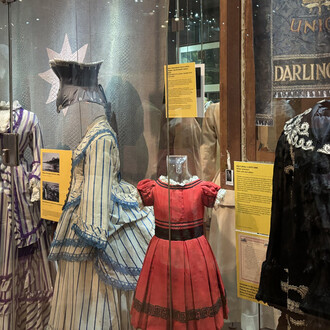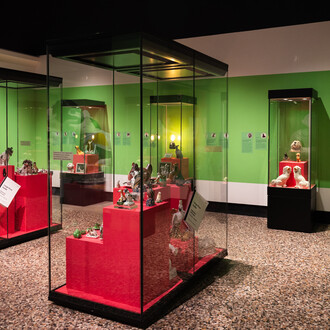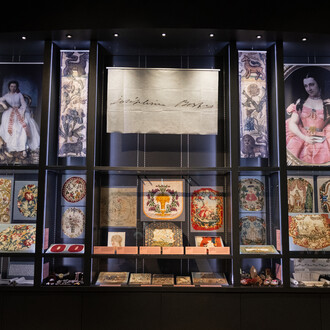A new and exclusive exhibition aimed at families opens at The Bowes Museum on Saturday 21st June 2014.
Offering up a flavour of childhood in the reign of Queen Victoria, Victorian Childhood explores the way in which young lives were lived during this era depending on the social class each was born into. Using items from the Museum collection, it will focus on the ephemera of pieces from daily life.
Curated by the Museum’s Education Coordinator, Amy Bainbridge, the exhibition is divided into various themes including:
Queen Victoria
Currently the longest serving monarch, who reigned over the British Empire, which at its height ruled a quarter of the world’s population.
Home life
Wealthy families had little to do with their offspring in their formative years, employing wet nurses, nannies and servants to oversee their upbringing. Children from rich families tended to be ‘seen and not heard’, presented to their parents for just a short time each day; while poorer children shared beds with parents and siblings as well as outside lavatories and water pumps with their neighbours. Although country folk were less well off than their town counterparts they often had a better quality of life, with clean air, and could expect to live longer.
School and work life
At the start of the Victorian era there were no laws forcing children to attend school, with education seen as a privilege for the rich, particularly boys, and working class families often unable to afford the penny a day needed to send a child to school. In 1891 education became compulsory and free for those aged 5-10 years, but there were sometimes 70-80 pupils per class, while the children of the wealthy were tutored at home by governesses. It was the norm for children from poor backgrounds to start work at a very early age to supplement the family income, but they were paid a lot less than adults for the same job.
Clothes
Elaborate clothes for the well-to-do were made to measure by seamstresses and tailors, with children dressed formally in miniature versions of adult styles. Poorer children wore hand-me-downs, often of dark material so as not to show dirt, and often had no shoes. However, both rich and poor children tended to have a special set of clothes kept specifically for Sunday best.
Play and leisure
This was one area enjoyed by families regardless of circumstances. In the home families made their own entertainment with musical instruments, by singing songs, reading aloud or simply talking. Outdoor entertainment saw the rise in popularity of Victorian theatres and music halls, while the opening of many galleries and museums, including The Bowes, introduced ordinary people to the wider world of art. Cheap railway transport also meant families could access the seaside for the first time. Victorian children from poorer backgrounds often played on the streets with homemade wooden toys, hoops, marbles and skipping ropes, as there was far less traffic and no television or computers, while well-to-do youngsters enjoyed toys of their own including dolls and lead soldiers.
The exhibition, which includes items from Beamish Museum, opens on Saturday 21st June, running until Sunday 7th September 2014.















